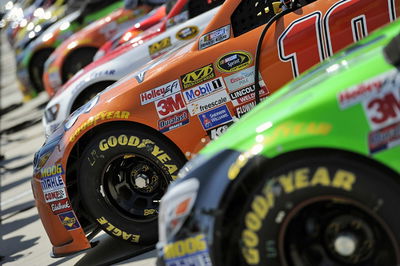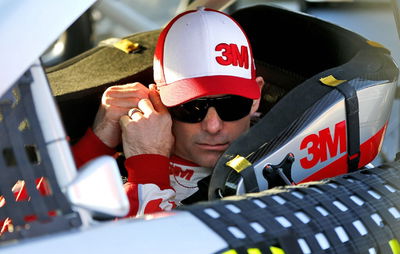Max Yamabiko: The NASCAR tyre temptation

The NASCAR race at Atlanta this weekend is set to be a wild ride and not least because of the ill considered new qualifying format which has already lead to a number of wrecks.
NASCAR has introduced a whole raft of new regulations for the 2015 Sprint Cup season and those will change a lot about the way teams work on their cars on pit road, especially during the closing stages of the race.
NASCAR has decided to leave two things up to teams that it had previously closely regulated in the past, and both relate to the wheels fitted to the cars.
Firstly, the tyres. In the past NASCAR has enforced a minimum tyre gas inflation level on the right front (and sometimes the left front), usually sticking to the recommendations from Goodyear but this season they have decided to leave it up to the crew chiefs.
Dropping the tyre pressures at some tracks can lead to a substantial increase in grip, but conversely substantially increases the risk of a tyre failure at speed. Jimmie Johnson has perhaps found this out the hard way more than once including last year at New Hampshire where his Hendrick run Chevrolet suffered two rear tyre blow outs.
Goodyear said this was due to under inflation. Perhaps the team pushed it a bit too far, but they dispute that opinion. Others in the garage believe that the Hendrick cars and others were chasing the extra grip an under inflated tyre brings.
"Our team believes it's a case of too low of air pressure, and that's what they were doing to get them to wear funny and essentially blow out during the run," Kyle Busch said after teams struggled with blow outs at an earlier racing in 2014. "It's sort of like playing with fire. If you pour too much gas on it or let too much air out of it, the thing is going to go boom."
The tyres used in NASCAR on tracks over a mile long are quite different to those used in road course racing, and slightly anachronistic. They are based on a 1966 concept developed by Goodyear dubbed the Lifeguard Inner Liner Safety Spare, which is in essence a tyre within a tyre. It creates a second envelope inside the main tyre which in theory stops a full blowout and lets the car limp back to the pits.
The current tyre has a rubber-coated bundle of steel wires that runs along both inside edges of the tyre and seals against the wheel, while an inside layer of rubber holds nitrogen gas. The next layer is the belt package, which provides strength and resists puncture to the outermost layer.
In 2014 Goodyear recommended the following minimum tyre pressures for Atlanta motor speedway: 30psi on both left hand tyres, 50psi in the right front and 47 psi in the right rear. Air pressure in the inner liners should be 12-25 psi greater than that of the outer tyre. However, though the teams can now dip below this, it is only really effective on some tracks like Atlanta. At Daytona taking the risk of running low pressures is only likely to show any benefit in a late race restart.
Something else likely to become a major 'risk vs. reward' scenario for crew chiefs conducting late race pit stops is simply how well the wheels are bolted onto the car. On a Superspeedway, or even at a fast track like Atlanta, the cars regularly exceed 200mph so the obvious answer would be that the five lug nuts on each wheel should be very firmly attached indeed, and in previous years NASCAR has forced that to be the case. Not any more, for this year it's up to the teams to decide how many lug nuts they want to use.
If the Crew Chief tells the tyre changers to just use three lug nuts, instead of all five, it could be a major time saver and something that could result in a much better position on track. But the fewer lug nuts used the more likely it is that the wheel will simply fall off at 200mph...
"Everybody says, well maybe they're going to just hit three lug nuts now," Rodney Childers, crew chief Kevin Harvick claims. "The problem is that when you hit three, probably only two of them are going to be tight and that's not going to be good enough. There are just so many things that can go wrong."
If and when things go wrong it might not be immediately apparent, meaning that even if the car stopped under caution it could be running at full speed under green when the problem manifests itself.
"If you do leave a lug nut just hanging on the stud, there's a pretty good chance it's going to sling off the stud and then the glue will hang onto it for about five laps. The lug nut will end up inside the wheel and then it's going to knock a valve stem off and you're going to give away a race. That's the kind of thing you've got to worry about and be careful with" Childers adds.
The risk is not just one of on track performance loss, but also a financial and sporting one. NASCAR has said that it could fine teams that lose wheels on track as much as $50,000 allied to a crew chief suspension and deduction of 15 points.
The reward though could be the difference between victory and trailing home 15th or lower. Many are certain that some crew chiefs will be taking the gambles of under inflated tyres and missing lug nuts this weekend and indeed all year long. It could result in a wild ride to the chequers!










